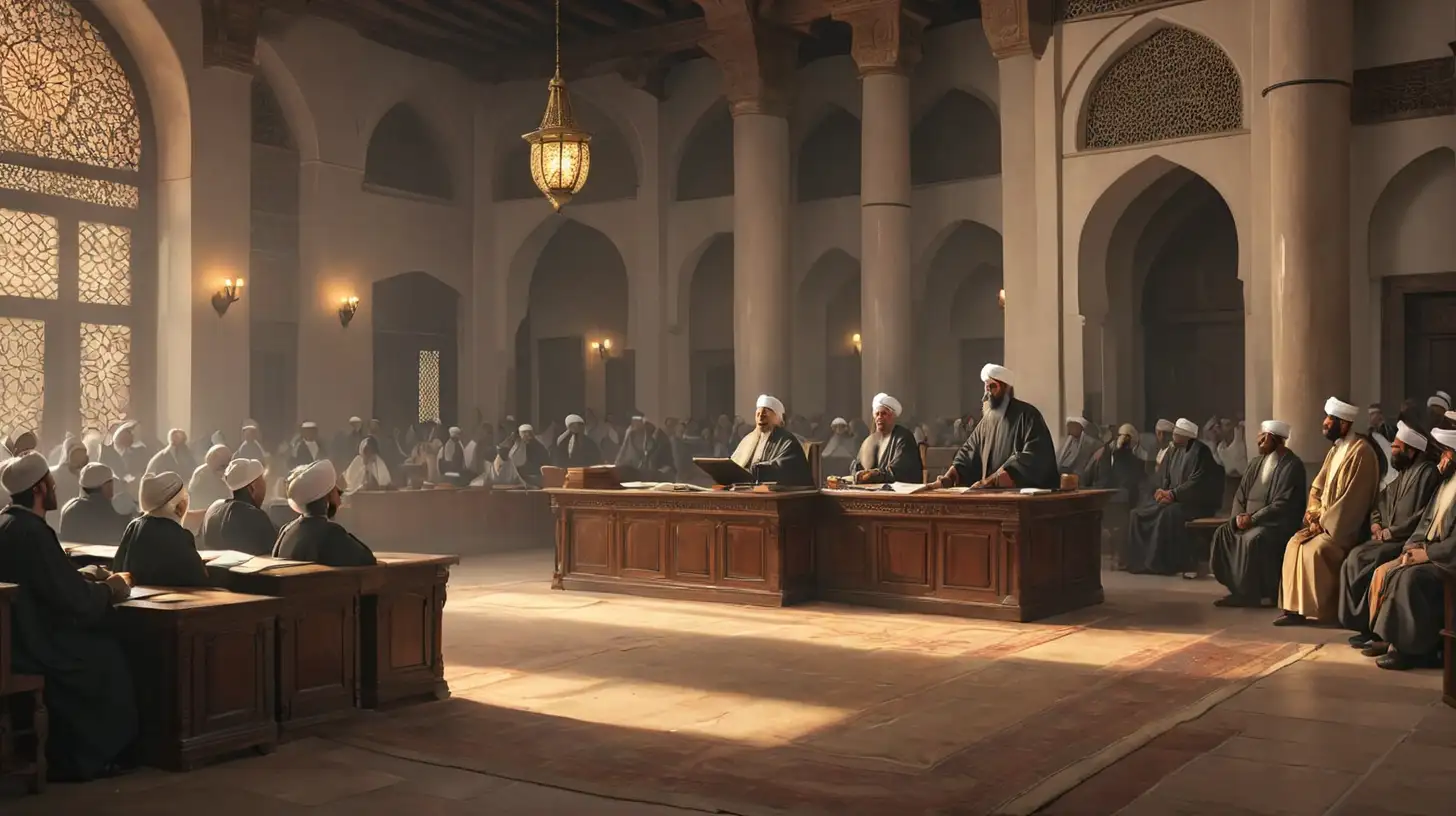18th Century Islamic Old Judiciary Law Court with Seated Islamic Judge

R
AI Art Image Prompt
Choose Model: 3danime
Aspect Ratio: 16:9
Related AI Images
AI Art Prompt Analyze
- Subject: The image captures the essence of an 18th century Islamic judiciary law court, a pivotal setting in the historical and cultural context of Islamic legal systems. The Islamic Judge, or Qadi, is the central figure, seated in a manner that commands respect and authority, reflecting the importance of his role in interpreting and applying the sharia law. Setting: The court is adorned with intricate Islamic architecture, featuring elaborate arches and columns, indicative of the artistic and engineering prowess of the era. The background showcases the detailed craftsmanship, with perhaps a hint of a courtyard or a view of the bustling outside world, providing a contrast between the solemnity of justice and the vibrancy of daily life. Style: The vector image should employ a detailed, realistic style to accurately depict the historical accuracy of the scene. The lines and shapes should be crisp, with attention to the fine details such as the calligraphy on the walls, the patterned tiles, and the texture of the fabrics. Coloring: The color palette should be rich and warm, with earthy tones and subtle metallic accents to convey the opulence and dignity of the court. The Islamic Judge's robes might be in deep blues or greens, with a contrasting color for the turban, symbolizing wisdom and authority. Action/Items: The Islamic Judge is shown in the act of deliberation or judgement, perhaps with a pen in hand or holding a scroll, signifying the scholarly and contemplative nature of the role. The presence of other items such as a gavel, inkwell, or a copy of the Quran could further emphasize the judicial process. Costume/Appearance: The Islamic Judge's attire should be traditional and reflective of the period, with a flowing robe, a turban, and perhaps a beard, signifying maturity and wisdom. The clothing should be adorned with subtle patterns or embroidery, adding to the authenticity of the portrayal. Accessories: In addition to the judicial items mentioned, the scene could include accessories like carpets with complex geometric patterns, ornate lamps, and other elements that would have been present in an 18th century Islamic court, enriching the overall visual narrative.